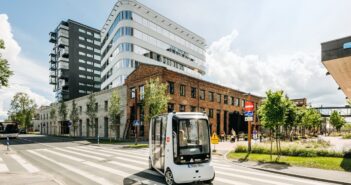This year Commercial Observer partnered with MIPIM to co-organize the program’s U.S panel on Wednesday March 13th entitled “Investing & Developing in the United States: what, where and how?” Here’s what a selection of the speakers had to say:
Kenneth Fisher, Partner, Fisher Brothers

Kenneth Fisher
It’s a great time to invest and develop in the United States. Overall, the economy remains strong and there continues to be job growth, which are major contributing factors in making the U.S. prime for development.
The reforms to the Foreign Investment in Real Property Tax Act (FIRPTA) have been favorable. While I do think further reform is needed to spur investment in crucial infrastructure improvements, the changes to FIRPTA have no doubt contributed to economic growth and made developing in the United States a more efficient and worthwhile endeavor.
New York and the other gateway cities are attractive markets that draw a diverse investment pool across all asset classes. There is also increasing momentum in the secondary and tertiary markets, with new opportunities for development and investment in business-friendly markets like Nashville, Austin and cities in the Midwest. In addition, the advent of Opportunity Zones has created a good alternative to traditional central business district development.
I think there are opportunities across a variety of sectors right now. With an increased push for sustainable practices and many owners making efforts to lower their carbon footprint, the energy sector is an interesting one. In the retail sector, online shopping continues to boom and this growth has led to industrial opportunities, since online retailers need warehouses to store their goods. There are also opportunities for alternative retail development, like our Area15 project which weaves together immersive experiences, events, art, restaurants and bars.
Mark Edelstein, Partner, Morrison & Foerster LLP

Mark Edelstein
Multi-family ownership and development present some strong investment opportunities. A good rule of thumb is to watch the migration patterns of baby boomers and millennials.
The boomers have started to age out of their primary and second homes. Wishing to downsize, they have begun selling, but are too young for assisted living. Many move to cities, while others look at continuing care retirement communities and other senior living options. While there has been overbuilding in the high-end luxury condo space in many cities, this sector may see an uptick in luxury product development.
Millennials tend to shy away from home ownership, so rental housing focused on this group remains robust. Class B multi-family generally is strong in the U.S. given the housing affordability crisis many feel we are facing in America.
The pace of industrial development, such as modern logistics properties, will continue to increase. Political tensions may cause a short-term slowdown, but eventually political difficulties will resolve, and we currently don’t have enough modern properties to fill the needed volume.
The life sciences and healthcare sectors are booming. Other asset classes to consider involve 5G technology infrastructure and farm land, given the focus on higher quality, less mass produced products.
Some of the hottest growth markets seem to be major cities in the Southeast – such as Atlanta, Charlotte, Nashville, and Miami – and Southwest – such as Austin, Dallas, Phoenix, and Houston. The driver is a strong tech talent pool coupled with a favorable political and tax climate.
Bruce Mosler, Chairman, Global Brokerage, Cushman & Wakefield

Bruce Mosler
The greatest opportunities in the United States commercial real estate market are a result of the changing demographics of our country as well as the urbanization of America. According to the U.S. Bureau of Labor Statistics, millennials make up 28.5% of our population and have the highest representation in our current workforce. The millennial generation is spearheading continuous urbanization as they drive where businesses locate and what amenities are necessary in the new paradigm around property.
Due to this, gateway cities and industry driven cities such as New York, San Francisco, and Seattle are winning the war for talent over suburban or more rural environments. Businesses must follow the talent to successfully recruit and retain for the work force of the future, creating great opportunity in these cities’ commercial real estate markets.
Kristin Khanna, Director, CMBS Finance, Barclays

Kristin Khanna
In terms of geography, 24/7 coastal markets consistently provide attractive lending opportunities. However, we are also seeing solid transactions in cities like Dallas, Portland, Minneapolis, Philadelphia, and Northern Virginia. These markets generally have a mix of positive factors including population growth translating to housing demand, solid employment opportunities, and a critical mass of educational institutions. Industrial remains a sought-after asset type in the financing markets, with positive upside considering the continued growth of e-commerce and last-mile fulfillment centers. Mixed-use projects that create a true sense of place and deliver the live/work/play environment millennials and others gravitate towards are a good way to get exposure to a mix of cohesive asset types including Hospitality, Retail, Office, and Residential.
Want to learn more about the opportunities in the US?
Join these key US sessions at MIPIM:
GREATER SEATTLE: FROM CRANE CAPITAL TO CLOUD CITY
12 March 17.00-17.45| Coral Room – Palais -1
Organised by: Greater Seattle Partners and Washington Realtors
INVESTING & DEVELOPING IN THE UNITED STATES: WHERE, WHAT & HOW?
13 March 10.30 – 12.00 | Salon Debussy – Palais 3
Sponsored by: Commercial Observer
14 March 08.30-10.00| Salon Croisette – Palais 5
Sponsored by NAR
In partnership with: Illinois Realtors, Texas Association of Realtors, Missouri Realtors, Florida Realtors
THE US & CANADA PROPERTY MARKET TRENDS
14 March 15.15-16.00 | RED ROOM – Palais 3



